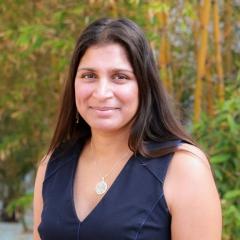ME Seminar on " Using Nanofluidic Technology for Nucleic Acid Based Diagnostic Devices"
Events | Mechanical Engineering
ME Seminar on " Using Nanofluidic Technology for Nucleic Acid Based Diagnostic Devices"
January 12, 2015 7:30 AM

Speaker
Prof. Sumita Pennathur, UC Santa Barbara, Mechanical Engineering
Location
ESB 1001
Type
Seminar
A rapid, accurate, handheld diagnostic tool for the detection of analytes in bodily fluids has the potential to revolutionize both global and individualized healthcare, addressing the need for facile early detection, enabling fast response to possible threats of epidemics, and revolutionizing personalized health monitoring devices. The miniaturization of classical “bulky” measurement techniques has led to the realization of complex analytical systems. However, even when using a miniaturized sensing platforms, most commercial instruments employed for the detection and analysis of biomolecular components remain time-consuming, expensive, and require trained technicians. In addition, they require lengthy sample preparation steps (e.g., for labeling, surface attachment, amplification) that in many cases prevent rapid facile analysis. Nanofluidics may offer solutions that will alleviate all the problems listed above, since the unique capabilities inherent in nanofluidic systems allow for the exquisitely sensitive, rapid manipulation of biomolecules in a potentially portable, easy to operate, low-cost device. Since nanofluidic channels are on the same length scale of both the electric double layer that forms at a solid-liquid interface, as well as the biomolecules themselves, we can overcome the challenges involved and can harness the coupled physics of complex biological fluids in nanofluidic channels towards unique, efficient technology that will allow for a truly new regime of analysis. In this talk I will present our robust theoretical models and characterization methods for nanochannel surfaces and interactions with analytes of interest. Furthermore, I will show the unique bioanalysis capabilities of micro- and nanofluidic channels through our ability to predict nucleic acid size, shape and conformation from comparison between modeling and experimental data, and the development of a nanofluidic based DNA sensor. The results of these investigations will help provide guidance to the design and fabrication of truly translational studies in biology and medicine.
Bio: Dr. Pennathur received her B.S. and M.S. in Aerospace and Aeronautical Engineering from M.I.T. (2000 and 2001 respectively), and Ph.D. in Mechanical Engineering from Stanford University (2006). Prior to joining UCSB in 2007, she preformed postdoctoral studies at both Sandia National Laboratories and University of Twente. Since arriving at UCSB, Pennathur has contributed significantly to the fields of nanofluidics and interfacial science. She has been able to push the envelope in both theoretical and experimental characterization of nanofluidic channels. Furthermore, she has discovered novel nanoscale concentration mechanisms which focus analytes of interest within nanofluidic channels and has demonstrated unique quantitative separations of various biomolecules. Finally, she has developed a novel fabrication process for on-chip detection of biomolecules, which has the potential to revolutionize bio-analytical devices, eliminating the need for laborious optical tagging of samples. These major contributions have been disseminated in the form of over 60 archived journal publications, books or conference papers, 3 patent applications, and over 50 invited presentations. Notable awards include the DARPA young faculty award (2008), the UC Regents Junior Faculty Fellowship (2009), and the PECASE (presidential early career award in science and engineering) award (2010), and the Santa Barbara Chamber of Commerce Innovator of the Quarter Award (2012)